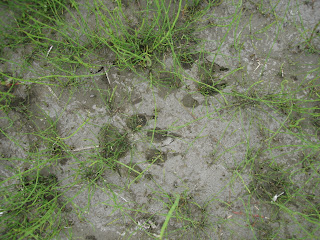Environmental & Science Education
by Edward Hessler
 |
| By Jolly Janner [Public domain], via Wikimedia Commons, 2007 map of ecological footprint |
The Ecological Footprint
The idea of the
ecological footprint was first developed by
William Rees, University of British Columbia. It was more fully developed, including a method of calculating it, by his Ph.D. student,
Mathis Wackernagel. In 2012, they were awarded the
Blue Planet award for this concept and influential work.
The ecological footprint is a widely used tool in environmental education. There are a variety of
calculators but if you haven't used one and want to, it is worth checking several to see how well each fits with your needs and intentions.
And as long as I'm talking about this idea, Laura Jane Martin asks whether our ecological footprint is the best metaphor for measuring our
ecological impact. She suggests that our ecological handprint may be a more powerful way of conceiving it as well as making it more useful. The idea of an ecological handprint was developed by Rocky Rohwedder, Sonoma State University, who describes it in this
Tedx Talk at Irvine.
But the real purpose of this post is to describe some actions to reduce a very large footprint by a large organization.
The 2014 National Hockey League Sustainability Report
 |
By D'Arcy Norman from Calgary,
Canada (Flames vs. Wild - 10)
[CC BY 2.0 (http://creativecommons.org/licenses/by/2.0)],
via Wikimedia Commons |
The late University of Wisconsin's ice hockey coach,
Badger Bob Johnson is remembered for his enthusiasm for the game as well as a greeting he used with almost everyone he met:
It's a Great Day for Hockey.
OK, it is June but the rink rats are still at it, playing for the Stanley Cup. So, it seems appropriate to talk about the game and its future. Were he here, Coach Johnson would agree.
Will it always be a great day for hockey? There is concern about the number of great hockey days left, according to the not-so-recently released
2014 NHL Sustainability Report.
In a letter accompanying the report, Dr. Allen Hershowitz of the
Natural Resources Defense Council writes that "Great credit is due to NHL Commissioner Gary Bettman and his staff: An organization is always a reflection of its leadership, and Commissioner Bettman is without a doubt one of the great environmental champions in the world of sports. No league has ever produced a sustainability report that is so thoughtfully crafted, honest about its limits and emphatic about the urgent need to protect our planet. And no league has ever been so frank about the risks to its very existence posed by climate change."
Divisions of the Report
The report is divided into these major sections: rationale for the report and methods used, the environmental platform of the League, profiles of players who grew up playing on frozen ponds, the environmental impact and case studies of the carbon footprint of the league, and technologies for the future to reduce professional hockey's footprint.
It is a remarkable report since it is from a large professional sports franchise on the impact of global climate change/global warming from an affected organization which also has an effect on global warming.










 CGEE Student Voice
CGEE Student Voice






